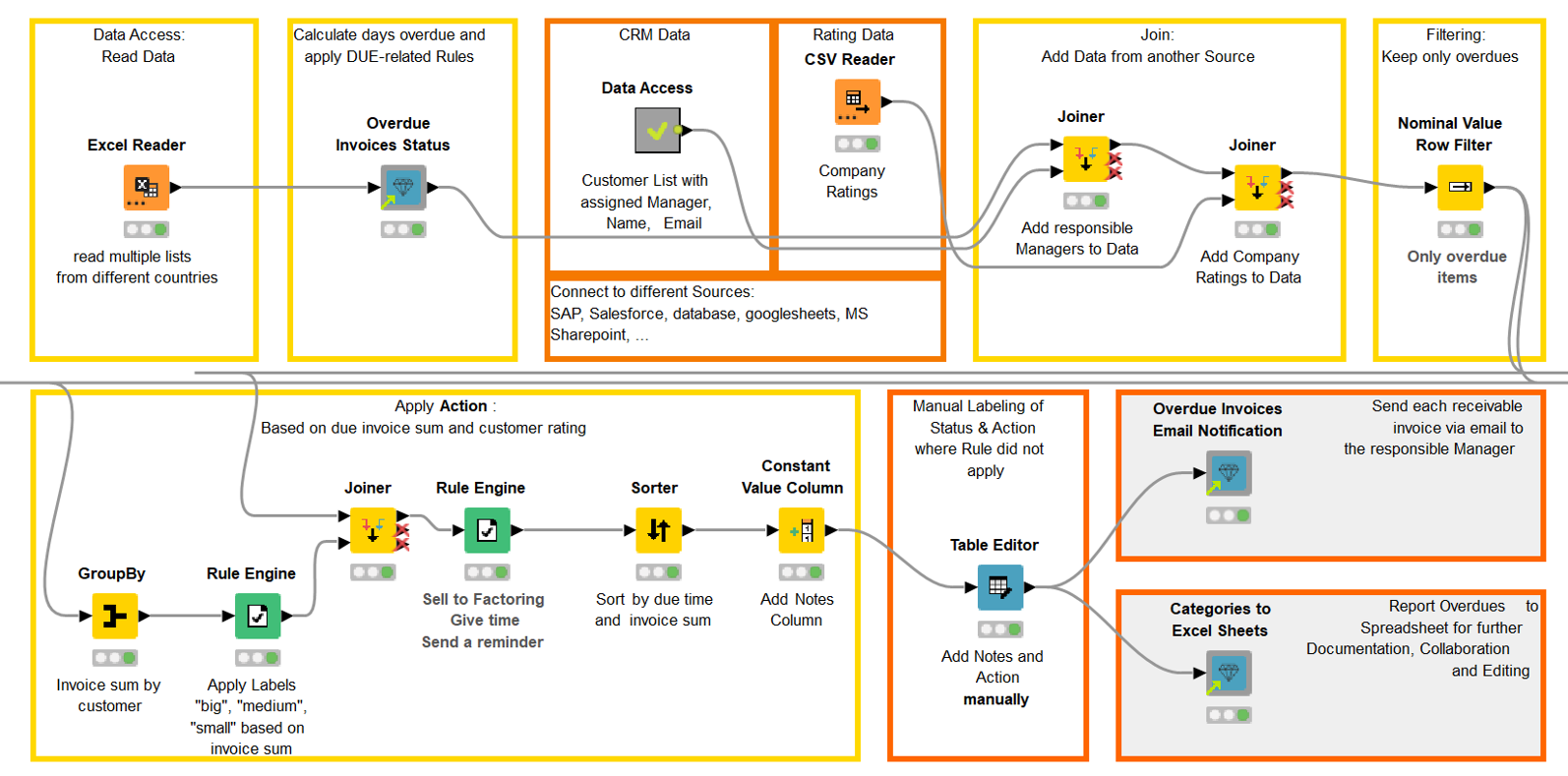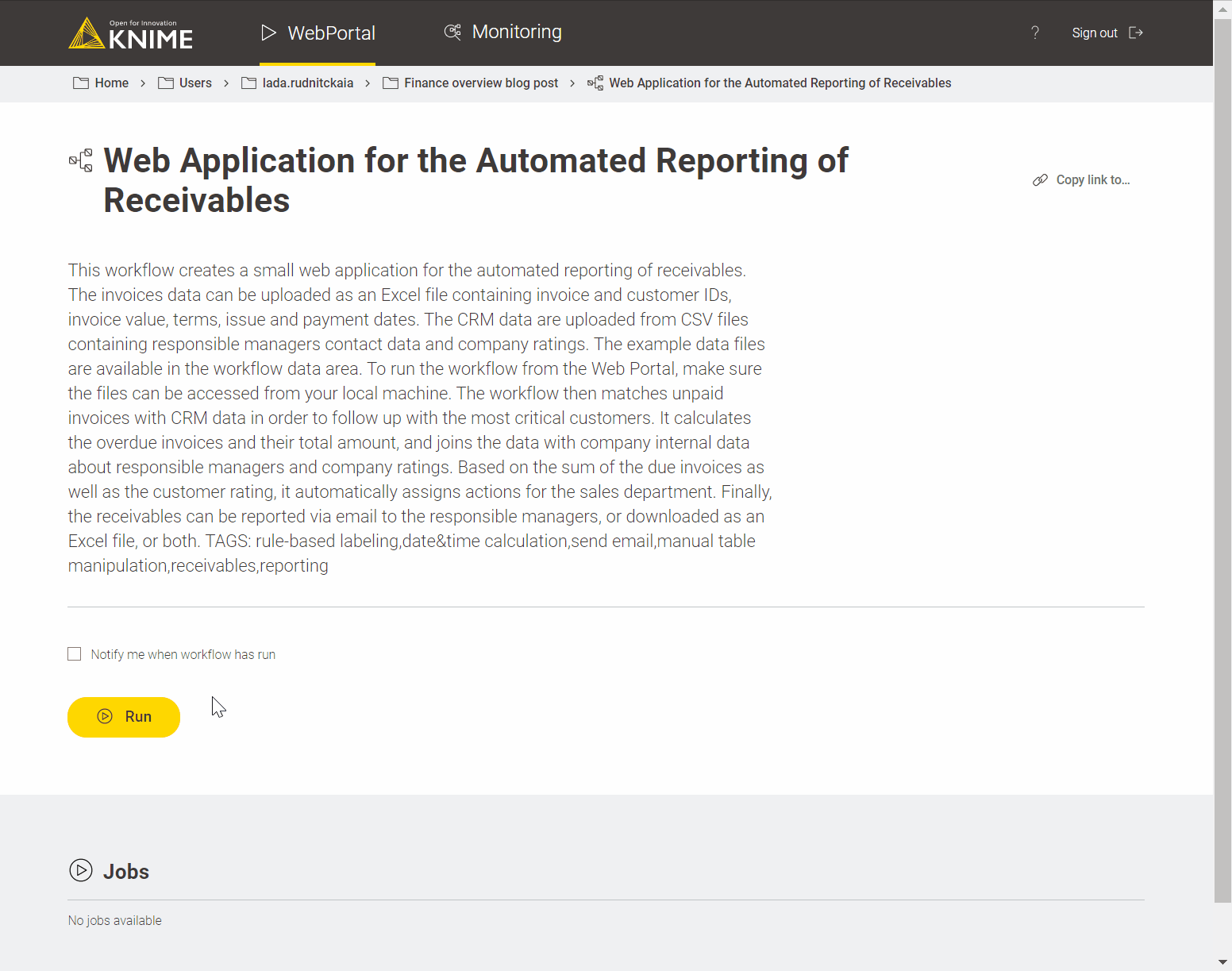One of the common problems companies encounter every day is overdue receivables. To avoid liquidity problems, overdue invoices can be monitored easily on a daily basis with automatic notifications sent to the responsible managers who can take the required actions. Interim results can be stored for auditing purposes.
Download and use or adapt the Automated Reporting of Receivables blueprint (Fig. 1) for your requirements. This workflow is designed to:
- Access the list of paid and unpaid invoices from an Excel file and additional information on customer ratings and responsible managers from CSV files
- Define the due status of each invoice, as “paid”, “pending”, “due during next 30 days”, or different granularities of “overdue” based on the issue date, payment terms, and payment date
- Assign the necessary actions - “give time”, “send a reminder”, or “sell to factoring” - to the invoices depending on due status, total amount of customer’s receivables, and company rating
- Notify the responsible managers via email automatically and store the results in a new Excel file.

Excel users might like to manually edit data directly in the workflow. This can be done via the Table Editor node both in KNIME Analytics Platform (Fig. 1) or via the KNIME WebPortal (Fig. 2).
While allowing manual corrections just like in a spreadsheet, the advantage of the Table Editor node is that it is much less error prone. Even if you accidentally overwrite some value, you can always go back to the downstream node and see the table that was output before the error occurred.
Simplify Interaction with KNIME WebPortal
In addition to intuitive visual workflows that you can build in the open source KNIME Analytics Platform, the KNIME Web Portal (commercial KNIME Server feature) simplifies the interactions with your data even further: it allows you to execute the workflows step by step as interactive, browser based applications.
Download the blueprint workflow Automated Reporting of Receivables from the KNIME Hub. This workflow has been adjusted to be run on the KNIME WebPortal. It can be downloaded from the KNIME Hub and enables you to perform the whole process —from invoice & data access through to overdue invoice reporting via a simple web application—and doesn’t require the end user to build, configure, or even know about the underlying workflow (Fig. 2). Note, though, that you need to have access to KNIME Server to be able to execute it on the KNIME Web Portal.

Share Functionality with KNIME Components
In KNIME, you can encapsulate workflow parts e.g., routine repetitive processes, into reusable components. Since components can have a configuration dialog just like all KNIME nodes, when you create a component, you are basically creating a new node that performs a customized task. You can create your own components or use the components dedicated for financial analysis developed and verified by KNIME experts.
This blueprint includes three verified shared components:
- Overdue Invoices Status calculates for each invoice the due date, the number of days till the due date, and the due status.
- Overdue Invoices Email Notification automatically sends emails to managers about invoices that require a particular action.
- Categories to Excel Sheets writes data into different Excel sheets. In our case it writes the data about invoices requiring different actions into different sheets.
Shared components for financial analysis aren’t the only way to interact with financial data. Find an overview of more blueprints where you can see how we combined standard KNIME nodes into extremely flexible and powerful workflows in the blog article Blueprints for Finance Data Aggregation.
